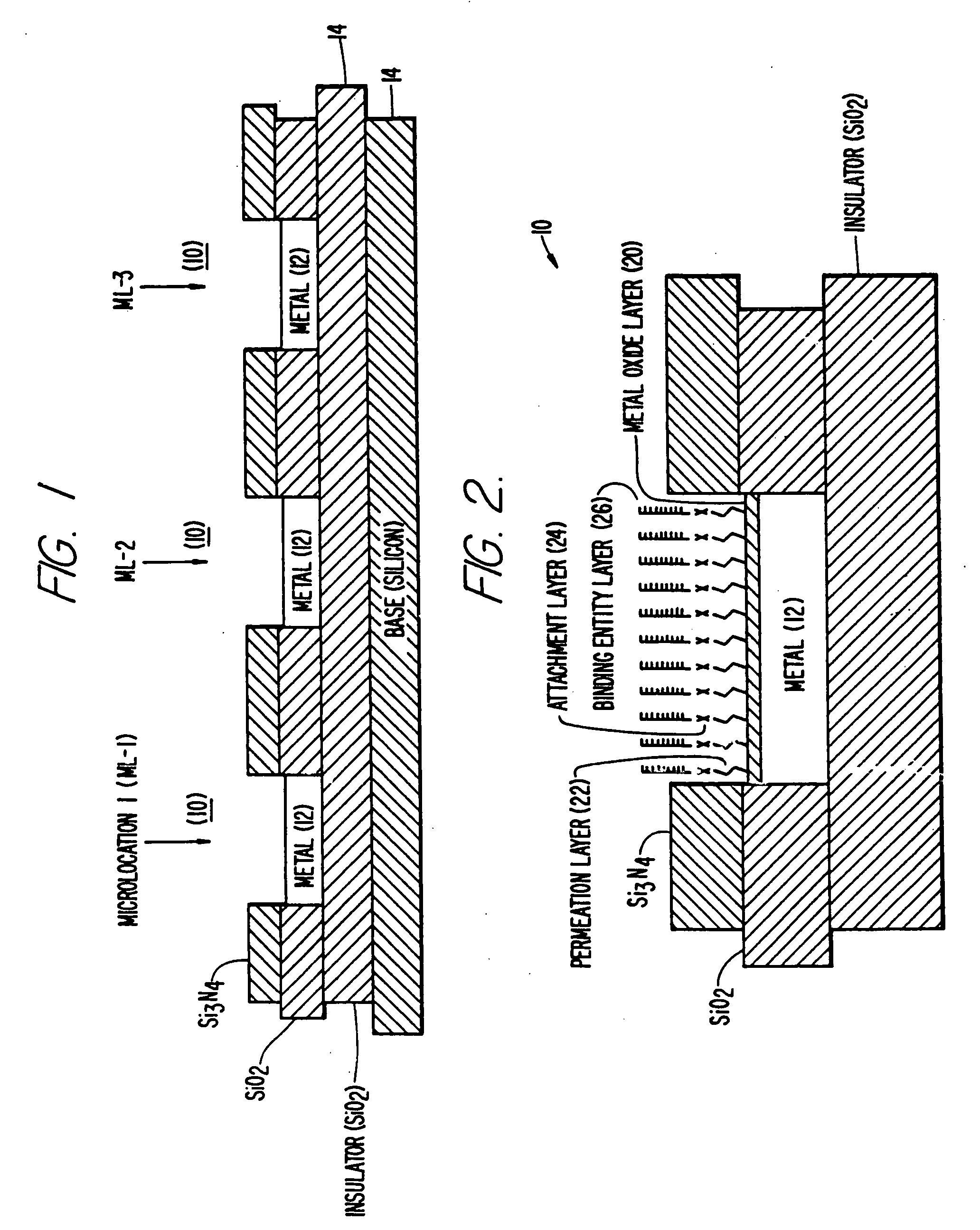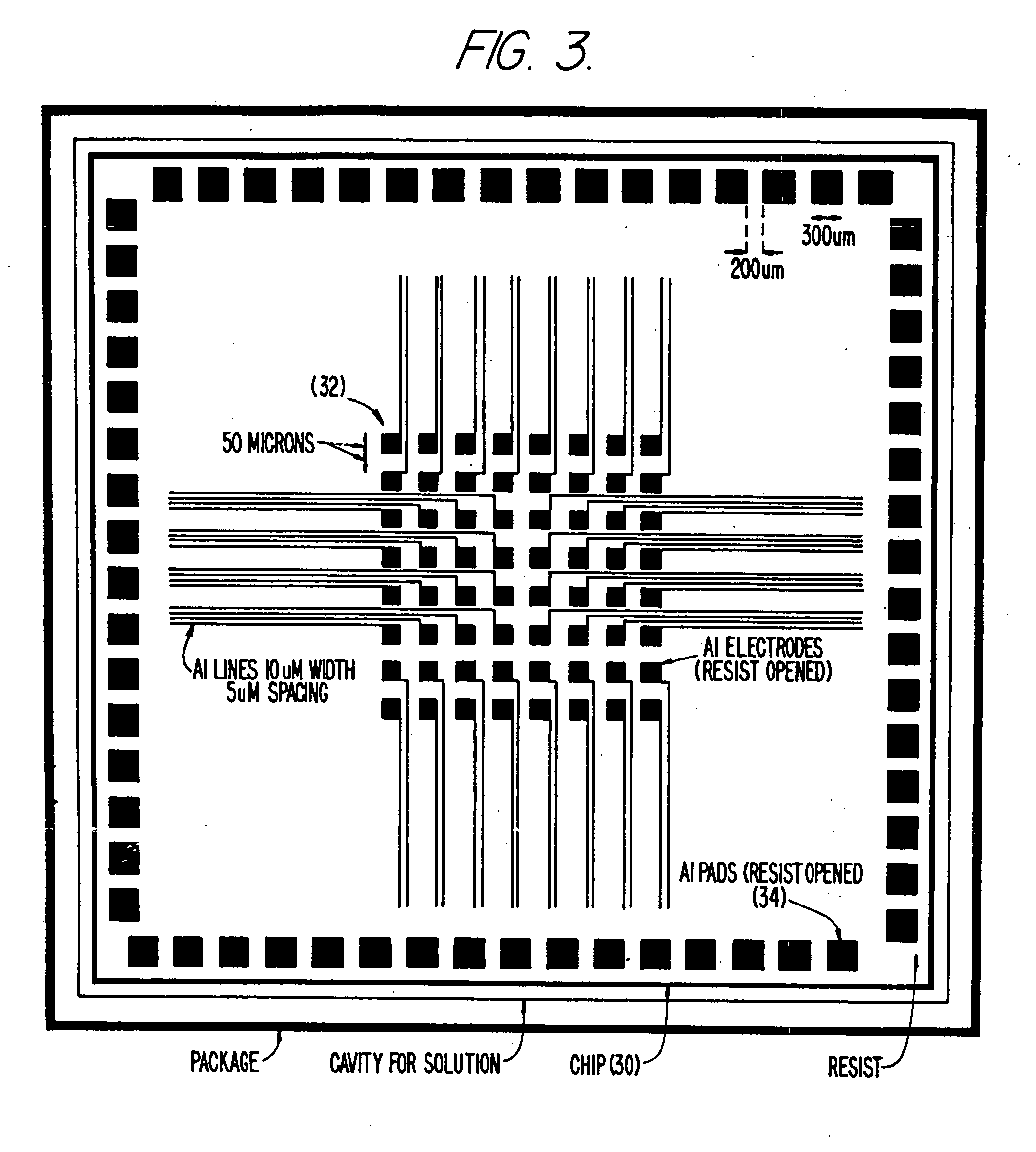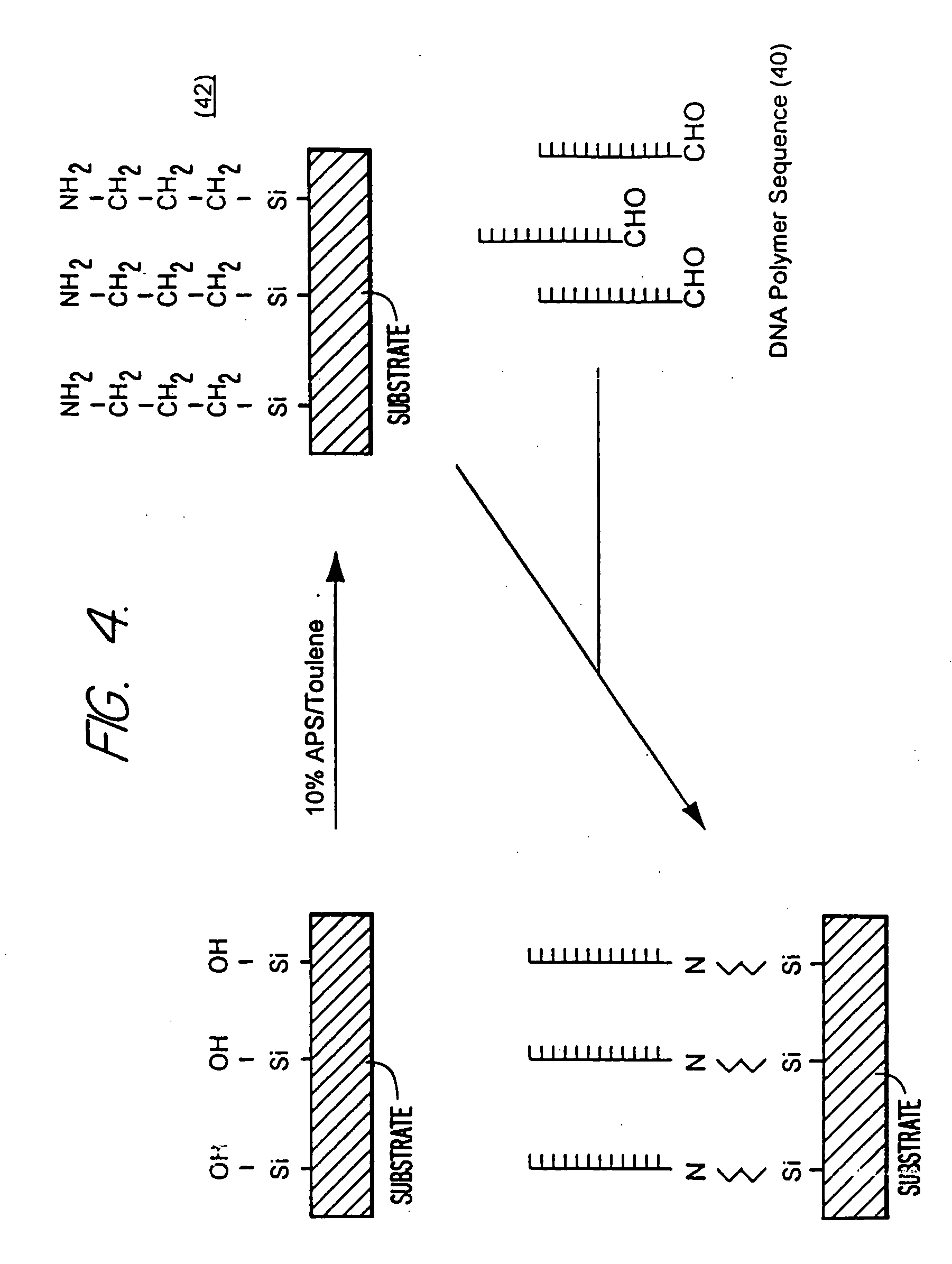Self-addressable self-assembling microelectronic integrated systems, component devices, mechanisms, methods, and procedures for molecular biological analysis and diagnostics
- Summary
- Abstract
- Description
- Claims
- Application Information
AI Technical Summary
Benefits of technology
Problems solved by technology
Method used
Image
Examples
example 1
Oligonucleotide Synthesis and Modifications
[0266] Synthetic DNA probes were made using conventional phosphoramidite chemistry on Applied Biosystems automated DNA synthesizers. Oligomers were designed to contain either a 5′-amino or a 3′-ribonucleoside terminus. The 5′ functionality was incorporated by using the ABI Aminolink 2 reagent and the 3′ functionality was introduced by initiating synthesis from an RNA CPG support. The 3′-ribonucleotide terminus can be converted to a terminal dialdehyde by the periodate oxidation method which can react with primary amines to form a Schiff's base.
[0267] Reaction conditions were as follows: Dissolve 20-30 O.D. oligomer in water to a final concentration of 1 OD / μl. Add 1 vol of 0.1M sodium acetate, pH 5.2 and 1 vol 0.45M sodium periodate (made fresh in water). Stir and incubate reaction for at least 2 hours at ambient temperature, in the dark. Load reaction mix onto a Sephadex G-10 column (pasteur pipette, 0.6×5.5 cm) equilibrated in 0.1M sodi...
example 2
Electronically Addressable Microlocations on a Microfabricated Device—Polylysine Method
[0272] Microlocations were fabricated from microcapillary tubes (0.2 mm×5 mm). The microcapillaries were filled with 18-26% polyacrylamide containing 0.1-1.0% polylysine and allowed to polymerize. The excess capillary was scored and removed to prevent air bubbles from being trapped within the tubes and to standardize the tube length. Capillaries were mounted in a manner such that they shared a common upper buffer reservoir and had individual lower buffer reservoirs. Each lower buffer reservoir contained a platinum wire electrode.
[0273] The top surface of the microcapillary in the upper reservoir was considered to be the addressable microlocation. The upper and lower reservoirs were filled with 0.1 M sodium phosphate, pH 7.4 and prerun for 10 minutes at 0.05 mA constant using a BioRad 500 / 1000 power supply. About 2 μl (0.1 O.D.) of periodate oxidized ET-12R capture sequence was pipetted into the ...
example 3
Electronically Addressable Microlocations on a Microfabricated Test Device—Succinimidyl Acrylate Method
[0276] This example describes an alternative attachment chemistry which covalently binds the 5′-terminus of the oligonucleotides. Capillaries were fabricated as described above except that 1% succinimidyl acrylate (Molecular Probes) was substitute for the polylysine. The capillaries were made up fresh because the succinimidyl ester used to react with primary amines is relatively labile, especially above pH 8.0. The capillaries were mounted as described above and the reservoirs were filled with 0.1 M sodium phosphate, pH 7.4. The capillaries were prerun for 10 minutes at 0.05 mA. About 2 μl ET10AL (0.1 O.D.), which contains a 5′-amino terminus, was pipetted into the upper reservoir with the power on and electrophoretic transport carried out for 2-5 minutes. The polarity was reversed so that the test devices were biased negative and electrophorese an additional 2-5 minutes. The unbo...
PUM
| Property | Measurement | Unit |
|---|---|---|
| Electrical conductivity | aaaaa | aaaaa |
| Temperature | aaaaa | aaaaa |
| Temperature | aaaaa | aaaaa |
Abstract
Description
Claims
Application Information
 Login to View More
Login to View More - R&D
- Intellectual Property
- Life Sciences
- Materials
- Tech Scout
- Unparalleled Data Quality
- Higher Quality Content
- 60% Fewer Hallucinations
Browse by: Latest US Patents, China's latest patents, Technical Efficacy Thesaurus, Application Domain, Technology Topic, Popular Technical Reports.
© 2025 PatSnap. All rights reserved.Legal|Privacy policy|Modern Slavery Act Transparency Statement|Sitemap|About US| Contact US: help@patsnap.com



